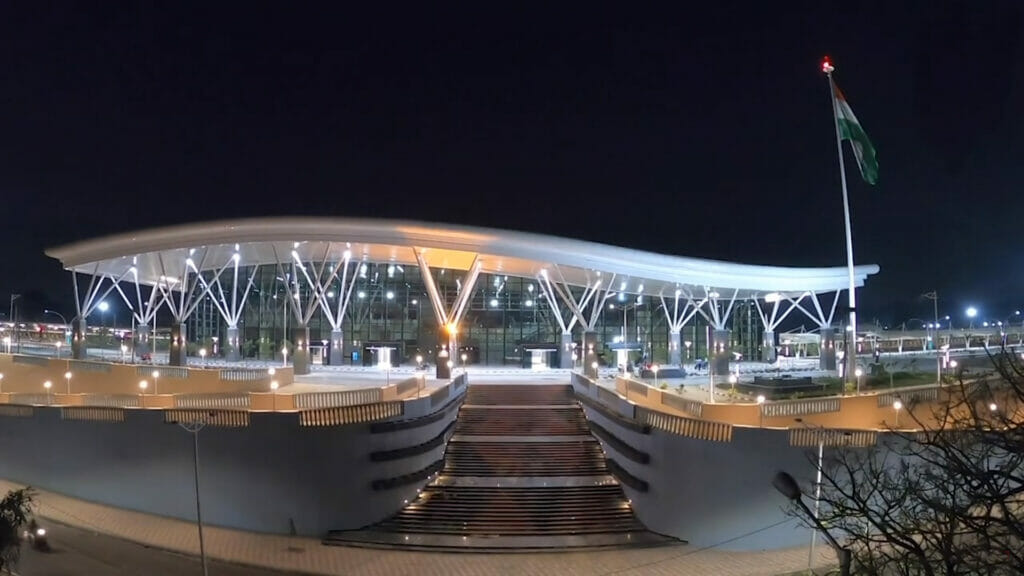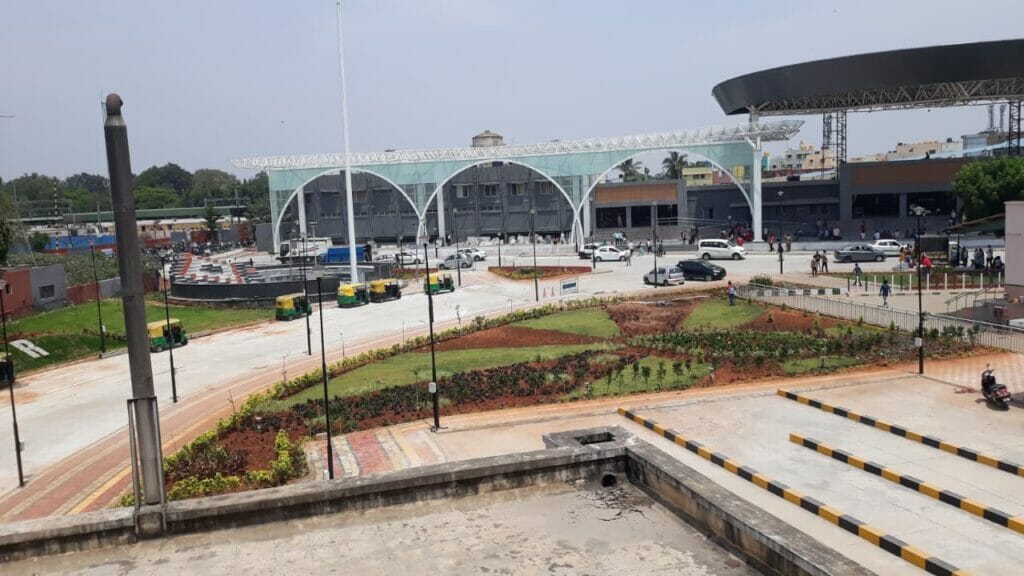The recently inaugurated Sir M. Vishveshwaraya Station in Bengaluru (SMVB) is almost always described as the “airport”-like railway station. The South Western Railways (SWR) drew inspiration from the Kempegowda International Airport in the design and aesthetics of the city’s third coaching terminal (the beginning and final points for trains).
Perhaps pleased with the outcome, SWR has now announced that the Krantiveera Sangoli Rayanna City Station (KSR), Yeshwantpur and Cantonment would also be revamped in a similar style. But do we need more airport-like railway stations? Especially considering how much time these revamps have taken so far, what should SWR’s priorities be?
The answers to these questions lie in the much publicised Sir M Visvesvaraya Terminal station at Byappanahalli (SMVB). The main reason why SMVB was needed was to reduce the burden on KSR city station and Yeshwantpur explain citizens advocating for better railways. Both these main stations have seen a steady increase in the number of trains and passengers but no change in the number of platforms, leading to delays and long wait times in train arrivals and departures. “Basically, there is a capacity constraint on these platforms and trains running through it,” says Sanjeev Dyamanavar, a member of the citizen’s action group Prajaa and long-time advocate for better railway infrastructure in the city.

SMVB was supposed to resolve these issues, but the focus on airport-like amenities has meant that the station is still struggling to fulfil its original purpose. “The location of the terminal is such that they are not able to operate too many trains from there,” Dyamanavar points out. “The station is not very accessible,” he adds.
Oversights due to lack of coordination
Indeed, SWR took nearly a decade to plan and build the station, but did not think of how passengers would travel to and from the railway station during this entire process. The station is still not connected to the Byappanahalli metro, which is just across the station. The small and narrow road accesses to the entrances also mean that reaching the station by bus, autos or cabs is a prolonged and nightmarish affair, particularly for passengers arriving from areas like Banaswadi and Kammanahalli.
The main reason for such mishaps is the lack of communication and coordination between different agencies, says Rajkumar Dugar, founder-convenor of the civic group Citizens for Citizens.
Read more: An urban rail network: Light at the end for Bengaluru’s harried commuters!
Rajkumar believes that the emphasis should be on improving infrastructure that actually helps to reduce the burden on the other stations and eliminate delays in train arrivals and departures. “Bengaluru is nowhere in terms of railway infrastructure,” he says. Instead, he points out that SWR’s focus is on beautification projects that are a waste of time and public funds.
What we need
The need of the hour is more platforms and improved automatic signalling according to both, Sanjeev and Rajkumar. Sanjeev feels the railways’ move to add more platforms at Cantonment was a step in the right direction. “But in Yeshwantpur and Majestic they are not doing what is required. They are focused on cosmetic changes,” Sanjeev says.
Among these cosmetic changes are entertainment zones, shopping centres, more AC waiting rooms, food courts and increased landscaping, all of which will cost approximately Rs 400 crores, according to SWR.
Read more: Why does Bengaluru need a new Special Purpose Vehicle for its suburban rail project?
Sanjeev suggests that SWR should instead be building a second terminal in Yeshwantpur, which had been proposed but not yet approved by the Railways Ministry. “This would add four or five more platforms, so there is no delay in trains,” he points out.
Issues with Yeshwantpur railway station
Yeshwantpur also has connectivity issues that are not being addressed. While undertaking this cosmetic makeover, SWR has put plans to connect the Yeshwantpur railway station to the Metro in cold storage. “A simple foot-over bridge and people can use public transport to reach the railway station and reduce congestion on the roads. But they [SWR] are not doing this,” says Rajkumar. Rail advocates also stress the need to improve automatic signalling at the stations, particularly Yeshwantpur, for smooth transition of the trains.
Apart from this, media reports have pointed out the problems with poor infrastructure for passengers, particularly good connectivity between platforms, no roofs over platforms, lack of elevators, poorly maintained toilets, and poor connectivity to the railway stations. Rajkumar adds the need for better signage and clearer announcements over the public address system so that passengers who cannot read or migrants from other states can easily understand the announcements.
The emphasis appears to be on getting passengers in and out of the railway stations as quickly and smoothly as possible. The desire to create airport-like terminals makes little sense according to Rajkumar. “The airport asks us to come two to four hours before a flight, but we do not need to do that at the railway stations. Here, it makes sense to come 15 minutes before a train,” he says, adding that the work undertaken should reflect that.

“Instead of fixing the problems causing those delays they are saying let us make you spend more time at the railway station.” This rings true as the SWR and associated bodies have repeatedly emphasised that the goal is to make these railway stations tourist hubs and city centres. The railways needs to figure out what their role is according to Sanjeev. “They need to decide if their role is to fix railway travel and serve passengers or act like a real estate company,” he adds.
Ultimately, Sanjeev questions why the railways take superficial inspiration from the airport but do not learn any real lessons. He points out that the airport has focused on adding more runways, gates and terminals. “They [the airport] have focussed on capacity. Why can’t the railways do that?”
It is clear that the public and citizen groups have different priorities from the SWR. But these plans never converge, because the railway body appears to never consult the public over its plans. “Not once have they shared these plans with the public,” says Rajkumar. The lack of consultation and coordination with other bodies, such as the BBMP, has become a hallmark of the department.
Share your thoughts on the railways
- Visit this website if you want to reach out regarding queries on railways or email Shyam Singh , Div. Rly Manager at drm@sbc.railnet.gov.in, or call A.N. Krishna Reddy, Public Relations Officer, on 080-22874670.
Yeshwantpur Railway Station is a joke. Everyone who goes there can see that all the large steel structures reaching towards the sky that make it superficially look like an airport are just a shell, and the real structure is much smaller. They should expand the usable space, not (literally) build castles in the air. It’s fine if they want to build shops and entertainment areas so long as they have a concrete plan of making rent money from it, otherwise it is a pointless waste. Above all the stations must be easily accessible by both road and metro, but for some reason SWR always takes an antagonistic stance against BMRCL and the State Government, making it difficult. Getting out of SBC via Majestic side is a nightmare. SMVT is literally in the middle of nowhere. There is a perpetual heavy traffic flow outside Kengeri, which has no road inside for pickup/dropoff. Cantonment is one of the better ones. These are the problems that SWR needs to address, not to build a poor man’s KIA everywhere.